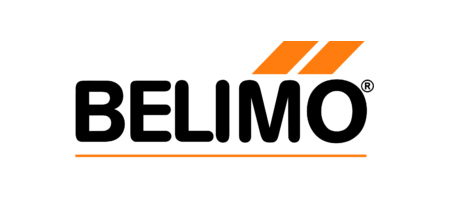Building Intelligence at the Edge and a Pipeline to the Cloud
As we have posted before, SAPinsider has started work on a report titled “Integrating SAP Systems with the Factory Floor: Road-Mapping IT/OT Integration,” focused on collecting data from manufacturing facilities and maximizing the value and utility of that data. To build on that research, and to gain deeper insight into how SAP partners support customers in this area, we recently interviewed leadership at Nutanix about the Xi (pronounced zye) IoT platform and its capabilities at the edge and in the cloud.
Unfortunately, collecting data from operational technology (OT) machines on factory floors presents many challenges. Factories tend to have dozens to hundreds of machines from several original equipment manufacturers (OEMs) that all communicate in proprietary protocols, making it difficult to exchange data between OT systems, let alone between information technology (IT) and OT systems. Internet of Things (IoT) integration solutions and platforms make it possible to extract OT data and run IT systems at the edge of an enterprise’s IT network.
When we talk about the edge of a network, it implies that an organization is connecting something outside of its core data center or cloud as a data source. Edge intelligence means processing data and potentially running analytics or machine-learning algorithms close to the data sources, outside the data centers.
Here, we share some of the initial findings from a survey of SAP customers we conducted on IT/OT integration, as well as what we learned from our conversation with Nutanix leadership, including how they view the business and technical problems to which IoT and intelligent technologies can provide solutions.
A Combination of Edge Intelligence and Enterprise Integration
In the aforementioned report, we explore the problem of how applications of technologies such as digital twins and artificial intelligence (AI) often cannot work without access to real-time data from the factory floor — data that can empower both workers at the plant and senior management at corporate offices to visualize issues in context or predict them before they occur. From surveying our members, we know that 61% of SAP customers with manufacturing operations have on-premise gateways and servers that can process IoT data on the factory floor. Unfortunately, only 22% currently use AI and machine learning for pattern recognition and predictive analytics on this data.
Additionally, only 22% use edge middleware today to integrate data from the factory floor into their enterprise systems or IoT platforms, and a mere 13% currently use intelligent applications that run at the edge. Leaders — respondents who already use integrated IT and OT systems — show a slightly different story, with 60% using edge middleware but still only 20% using intelligent applications at the edge. This indicates that even among the companies that have access to operational data, only a minority can apply machine-learning models to real-time data at the edge.
PaaS and Predictive Maintenance
Taking advantage of IoT data in a manufacturing environment involves translating proprietary protocols, processing the data at the edge, and deciding what data to send to the cloud. Cloud-based systems provide further processing, machine-learning model training, collaboration tools, and visibility. From there, manufacturers need to deploy the machine-learning models to the edge to operate in real-time and finetune the models to specific circumstances.
When Nutanix deploys the Xi IoT platform for customers, it enables the Platform-as-a-Service (PaaS) concept at the edge, running analytics, AI, inferencing, data integration, and machine learning on gateways that reside at the factory. It also provides the pipeline from the edge to any cloud that its customers may choose.
This structure empowers Nutanix to implement applications such as predictive maintenance, which it has done for many customers — including a Japanese electronic device manufacturer that builds specialized industrial equipment. This company had access to its machine data but did not have any edge-intelligence capabilities to refine that data, therefore, minimizing its value add. Now, with the Nutanix platform, this customer runs an AI-based solution for predictive maintenance for all its machines.
What Does This Mean for SAPinsiders?
Based on the findings from our research on IT/OT integration and edge intelligence, and our conversations with Nutanix leadership, the following will help SAP customers plan for integrating their enterprise systems with their factory floors:
- Work with an edge platform vendor that can deliver the data to enterprise systems, wherever they reside. Many SAP customers have started the shift to the cloud. This move can provide incredible benefits, but not all customers will stay with the same cloud providers forever. When selecting a platform to run at the edge, ensure that it will come with pipelines to any cloud that currently or could someday host enterprise systems such as SAP S/4HANA.
- Manufacturing operations leaders should take the lead on any factory-floor data project unless the organization has a specific Chief Digital Officer (CDO) type of role. CDOs can help implement more holistic solutions that align across the organization and build toward larger digital transformations. In organizations without a CDO, someone who speaks the OT language and understands OT key performance indicators (KPIs) needs to take the lead to ensure that edge-intelligence solutions deliver the greatest business impact.
- Democratize the data processing. In general, more compute power in more places means more opportunities to generate value from data. Bringing intelligent applications to the edge grants the ability to generate actionable insights from data as machines or automated processes generate it. The moment a machine’s sensors start to detect readings in a pattern that indicate a future issue, plant managers can schedule maintenance in a way that minimizes downtime. The second a quality issue occurs, a trained machine vision analytics application can flag it for someone to take it off the line and perform a deeper analysis on sensor readings to find the root cause.
- Feed insights back into planning. Every change in the factory that could affect output, production, or fulfillment times needs to feed back into the business and supply chain planning. If edge-intelligence solutions help improve productivity, the organization should be able to accept more orders or potentially promise faster deliveries. If the platform detects an issue that will cause a delay, the enterprise should look for another way to fulfill affected orders or adjust impacted plans.
Following this strategic guidance should help SAP customers plan to integrate SAP systems with the factory floor in a way that accelerates growth. For additional insights and lessons learned, look for the upcoming SAPinsider benchmark report “Integrating SAP Systems with the Factory Floor: Road-Mapping IT/OT Integration,” coming in November 2019.
Pierce Owen can be reached at Pierce.Owen@wispubs.com.




